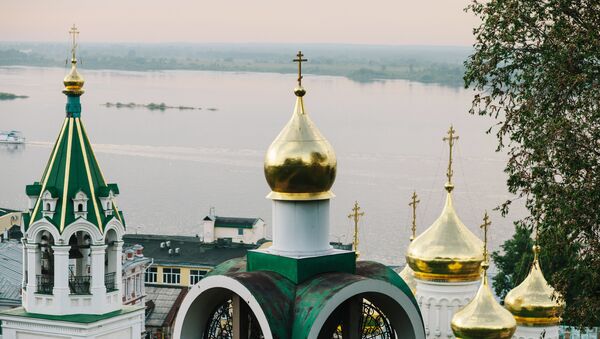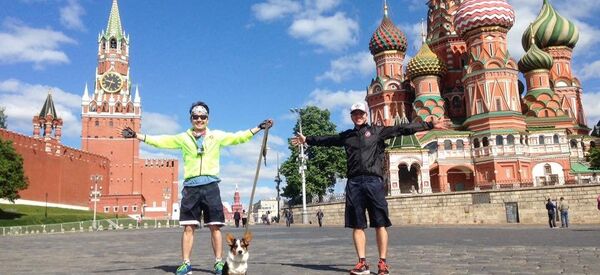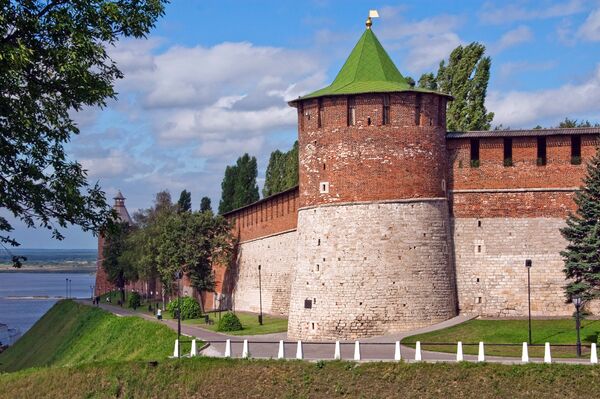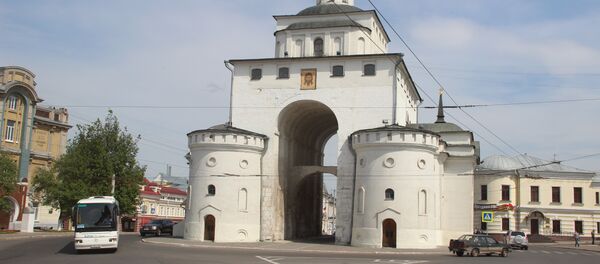Nizhny Novgorod, the fifth largest Russian city, was established in 1221 some 400 km away from Moscow. Sitting on the confluence of the Oka and the Volga Rivers, Nizhny Novgorod served as an important military fortress that protected the Eastern border of ancient Russia.
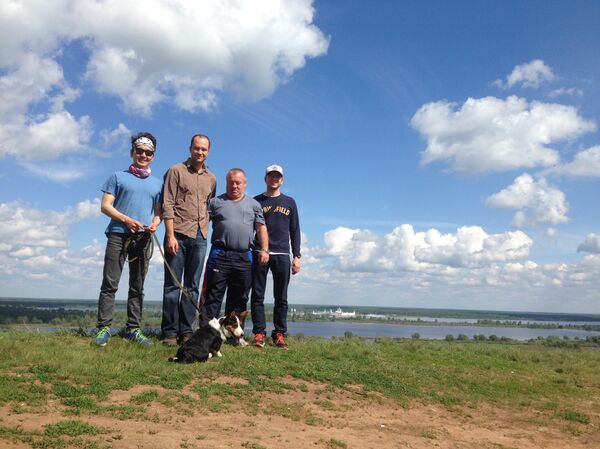
Today, Nizhny Novgorod is a tourist-friendly place with several really nice museums and a bunch of other cultural monuments. The main highlight of the city is its 16th Century Kremlin with its red-brick towers that dominate the skyline of Nizhny Novgorod.
One of the towers in the Nizhny Novgorod Kremlin, the Koromyslovo Tower, has a remarkable story behind its name. The word koromyslo translates from Russian as a yoke. The tower got its name in the 16th Century when Tatar forces besieged Nizhny Novgorod.
Out of the blue, the Tatars attacked the fortress in the middle of a night while the city’s guards were asleep. When Tatar soldiers climbed to the Koromyslovo Tower, one local woman, who was carrying the buckets of water, saw them. Worried that the woman would warn city guards, the Tatars quickly rushed in to kill her. Before the Tatars could slay the woman, she managed to kill ten of them using a yoke as her only weapon. This was definitely not something that fierce steppe warriors expected from a Nizhny Novgorod woman.
In present time, the Kremlin closes at night at 12 AM, but according to locals, in the early 1990s the historical site was open 24 hours day. In later years, the Kremlin served as a gathering place for local hooligans and kids. City authorities didn’t like that and decided to close the place at midnight.
Although geographically the Nizhny Novgorod Region isn’t far from Moscow, there is a big socio-cultural gap between the two places. Life is a lot slower, traffic is a lot less and people are more open and receptive to the needs of strangers.
The real beauty of Nizhny Novgorod and its surrounding areas rests in its people, an incredibly hospitable and friendly folk.
Despite poverty and hardship, residents of small towns and villages in the Nizhny Novgorod Region kept their hearts pure and minds open from some of the vices often found in big cities.
When we arrived in the small town of Lyskovo in the eastern part of the Nizhny Novgorod Region, the head of a local sports committee, Evgeni Barinov, organized a welcome ceremony with a karavai, traditional Russian bread used to greet guests and show hospitality.
Since we were starving after cycling over 80 km that day, we divided up the bread and ate the entire karavai right in front of a crowd of local residents and the head of sports committee, garnering applause from the locals.
The hospitality of Russian people in small towns and villages along our way has really impressed me and become a motivational source to travel deeper into Russia. Residents of Lyskovo, for example, offered us a place to stay and eat. Then, they took us around the town showing local sights and a view to the Volga River.
“We don’t have a lot of money and all the entertainment and cultural centers, like people in Moscow, but every time I come to the Lysaya Hill [a large tree-less hill near Lyskovo after which the town was named] and stand facing our mother Volga, I realize that I live in one of the best places in the world,” Evgeni Barinov told me.
In general, Russians are an extraordinarily hospitable people. In the minds of Russian people, respect breeds respect. If guests come to Russia with an open mind and a broad smile, people will greet them with open arms, show around, feed and even offer their own beds.
This shatters existing stereotypes about Russian people’s unfriendliness and cold-nature. If anything, it’s the opposite that our cycling trip has proved so far.
